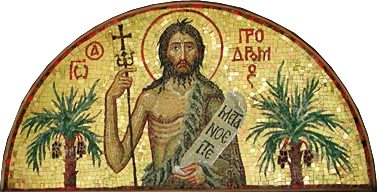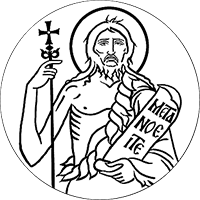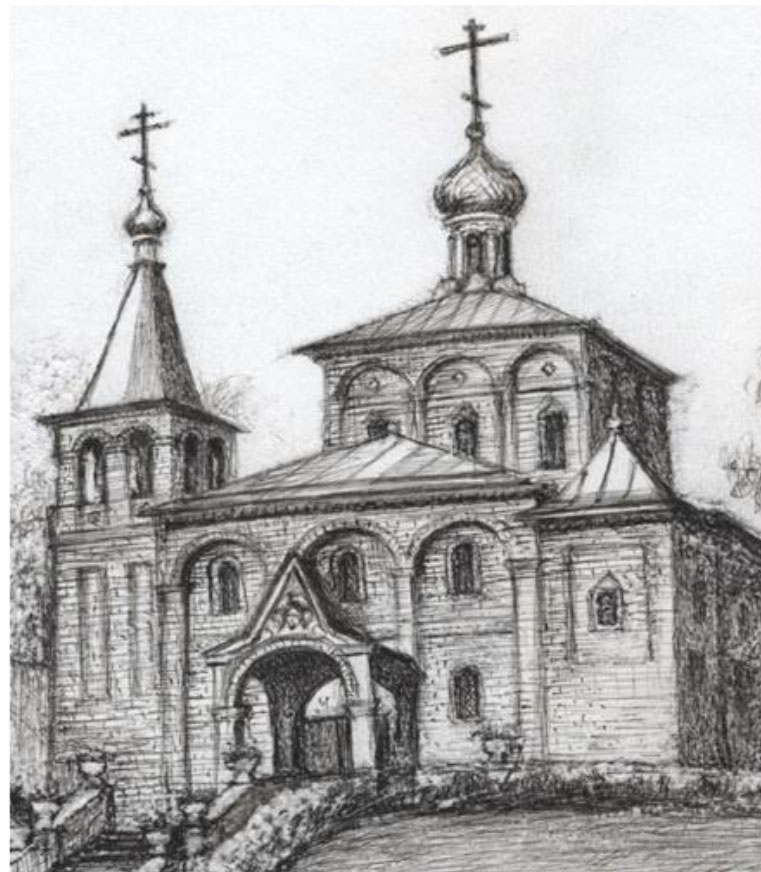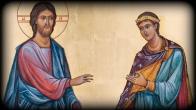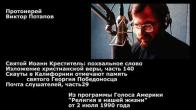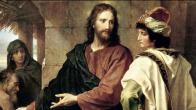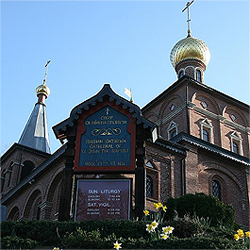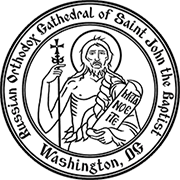You are here
THE HOLY AND GREAT MARTYR GEORGE
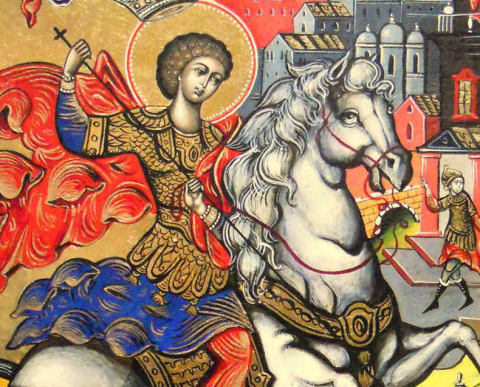
The Great Martyr George was the son of wealthy and pious parents, who raised him in the Christian faith. He was born in the city of Beirut (in antiquity - Berytos), at the foot of the Lebanese mountains. Having entered military service, the Greatmartyr George stood out among the other soldiers by virtue of his mind, valor, physical strength, military bearing and beauty. Having quickly attained the rank of millenary [tribunus millenarius, an officer in the Roman army in charge of a thousand or more soldiers - Translator], St. George became a favorite of the Emperor Diocletian.
Diocletian was a talented ruler, but a fanatical adherent of the Roman gods. Having set for himself the goal of reviving dying paganism in the Roman Empire, he went down in history as one of the most cruel persecutors of Christians.
Once, when he heard in a court the inhuman sentence concerning the annihilation of Christians, St. George became inflamed with compassion for them. Foreseeing that sufferings were also awaiting him, George distributed his property to the poor, freed his slaves, appeared before Diocletian and, having revealed himself as a Christian, denounced him for cruelty and injustice. George's speech was full of powerful and convincing objections against the imperial order to persecute Christians.
After futile persuasions to deny Christ, the Emperor ordered that the saint be subjected to various tortures. St. George was confined in a dungeon, where they placed him supine on the ground; his legs they confined in stocks, and on his breast they placed a heavy stone. But St. George manfully endured the sufferings and glorified the Lord. Then George's torturers began to refine their cruelty. They beat the saint with oxhide whips, subjected him to the wheel, threw him into quicklime and forced him to run in shoes with sharp nails inside. The holy Martyr endured everything patiently. Finally, the Emperor ordered the saint's head to be cut off. Thus, the holy sufferer departed unto Christ in Nicomedia in 303 A.D.
The Greatmartyr George, for his valour and his spiritual victory over his torturers, who could not force him to renounce Christianity, and likewise for his wonderworking assistance to people in danger, is additionally called the "Trophybearer." The relics of St. George the Trophybearer were placed in the Palestinian city of Lydda, in the church that bears his name, while his head was preserved in Rome, in the church that is also dedicated to him.
On icons, the Greatmartyr George is depicted sitting on a white horse and smiting a dragon with a spear. This depiction is based on tradition and relates to the posthumous miracles of the holy Greatmartyr George. It is said that not far from the place where St. George was born, in the city of Beirut, there lived a dragon in a lake who frequently devoured people of that locale. What kind of beast it was, a python, crocodile or large lizard is not known.
In order to appease the wrath of that dragon, the superstitious inhabitants of that locale began regularly by lot to give a youth or maiden up to it to be eaten. Once the lot fell on the daughter of the ruler of that locale. They took her to the shore of the lake and tied her up where she began to await in terror the appearance of the dragon.
When the beast began to approach her, suddenly a radiant youth appeared on a white horse who smote the dragon with a spear and saved the maiden. This youth was the Greatmartyr St. George. By such a miraculous appearance he caused the extermination of youths and maidens to cease in the environs of Beirut and converted to Christ the pagan inhabitants of that country.
One may suppose that St. George's appearance on a horse to defend the inhabitants from a dragon, and likewise the description in his life of the miraculous reviving of a farmer's only ox, served as the cause for honoring St. George as a protector of animal husbandry and as a defender from predatory beasts.
In prerevolutionary times, on the day of St. George's commemoration, the inhabitants of Russian villages, for the first time after the cold winter, would drive their animals out to pasture, after having performed a moleben (a Te Deum, or, a short service of thanksgiving) to the Holy Great Martyr and sprinkling their homes and animals with holy water.
The Great Martyr George is a protector of the army. The depiction of George the Trophybearer on a horse symbolizes victory over the devil [the ancient serpent]: "...behold a great fiery red dragon with seven heads and seven diadems on his heads....he laid hold of the dragon, that serpent of old, who is the devil and satan and bound him for a thousand years...." (Rev. 12:3, 20:2). This depiction was included in the ancient coat of arms of the city of Moscow.
Countless miracles that have been performed at his grave; he has also appeared in dreams to those who, thinking on him, have sought his help, from thence until the present day. Consumed by love for Christ, it was not difficult for St. George to leave all for this love - his status, wealth and imperial favor, his friends and the whole world. For this love, the Lord rewarded him with a wreath of unfading glory in heaven and on earth, and with eternal life in His Kingdom. The Lord further endowed him with the power to help in need and distress all who honor him and call on his name.
* * *
Troparion Tone 4
As the deliverer of captives/ and the protector of the poor,/ as the physician of the feeble and combatant of kings,/ holy champion and great martyr George,/ intercede with Christ our God to save our souls.
Kontakion Tone 4
Thou wast cultivated by God/ and didst become a most wonderful cultivator of piety,/ and didst harvest for thyself the sheaves of virtue,/ for having sown in tears thou didst reap in joy/ and having withstood death thou art garnered for Christ./ By thy intercessions, O Saint,/ thou dost obtain for us all remission of our sins.
Website of Bishop Alexander Mileant
5/6/2012
PARISH LIFE
RECENT VIDEOS
Address of our Cathedral
Subscribe to our mailing list
While all the materials on this site are copyrighted, you may use them freely as long as you treat them
with respect and provide attribution on the Russian Orthodox Cathedral of St.John the Baptist of Washington DC.
